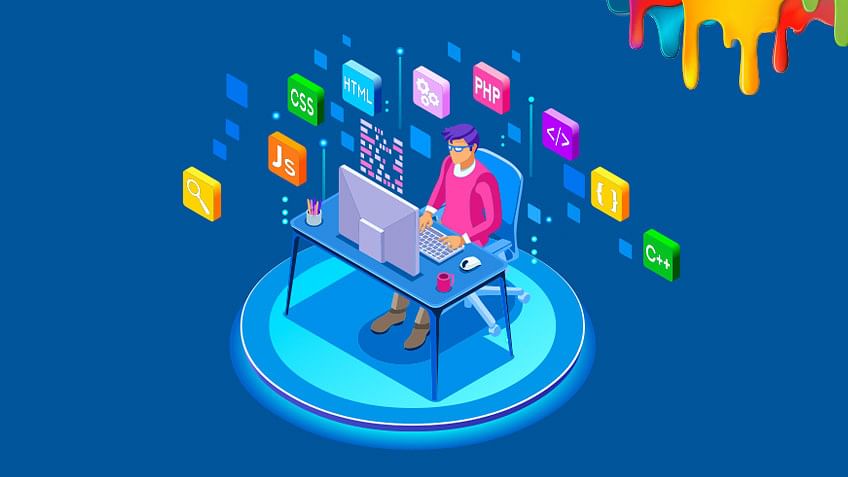Web development is a rapidly evolving field, with demand for skilled developers consistently on the...
What You’ll Learn in an Online Full Stack Course
In today’s digital age, the demand for full stack developers is skyrocketing. A full stack developer is a versatile professional who can handle both front-end and back-end development, making them highly valuable in the tech industry. Enrolling in an online full stack course is a great way to acquire the skills needed to build complete web applications from scratch. Here’s a breakdown of what you’ll learn in an online full stack course.
1. Introduction to Web Development
Your journey will start with the basics of web development, where you’ll get acquainted with the core concepts that form the foundation of web applications. This includes understanding how the internet works, how websites are structured, and the difference between front-end and back-end development. You’ll learn about web servers, browsers, and the protocols that facilitate communication between them.
2. Front-End Development
Front-end development focuses on the user interface (UI) and user experience (UX) of a website or application. In this section of the course, you’ll dive into:
-
HTML/CSS: These are the building blocks of the web. HTML (HyperText Markup Language) is used to create the structure of web pages, while CSS (Cascading Style Sheets) is used to style them. You’ll learn how to create responsive and visually appealing websites that work across different devices and screen sizes.
-
JavaScript: JavaScript is the scripting language that adds interactivity to web pages. You’ll learn how to create dynamic elements like sliders, forms, and navigation menus. You’ll also explore JavaScript frameworks and libraries like React.js, which simplify the process of building complex user interfaces.
-
Responsive Design: With more users accessing websites on mobile devices, responsive design has become crucial. You’ll learn how to design websites that look and function well on any device, using techniques like media queries, flexible grids, and fluid layouts.
3. Back-End Development
Back-end development deals with the server side of web applications, where the data is processed and stored. In this part of the course, you’ll explore:
-
Server-Side Programming Languages: You’ll learn languages like Node.js, Python, or Ruby, which are commonly used for back-end development. These languages allow you to write server-side code that handles requests, processes data, and interacts with databases.
-
Databases: Understanding how to work with databases is essential for full stack development. You’ll learn about both relational databases (like MySQL and PostgreSQL) and NoSQL databases (like MongoDB). You’ll also learn how to perform CRUD (Create, Read, Update, Delete) operations, which are fundamental for interacting with data in a database.
-
APIs and RESTful Services: You’ll learn how to create and consume APIs (Application Programming Interfaces), which are essential for enabling communication between different parts of a web application. You’ll also explore RESTful services, which provide a standardized way to build and consume APIs.
4. Version Control and Collaboration
Version control is a critical skill for any developer. In this section, you’ll learn:
-
Git and GitHub: Git is a version control system that helps you track changes in your codebase, while GitHub is a platform that allows you to collaborate with other developers. You’ll learn how to create repositories, commit changes, and manage branches, making it easier to work on projects both individually and as part of a team.
-
Collaboration Tools: In addition to Git and GitHub, you’ll explore other tools that facilitate collaboration, such as project management platforms (like Jira or Trello) and communication tools (like Slack). These tools are essential for working in a team environment, especially in remote settings.
5. DevOps and Deployment
To be a well-rounded full stack developer, you’ll need to understand how to deploy and manage web applications. This part of the course covers:
-
Deployment: You’ll learn how to deploy your web applications to cloud platforms like AWS, Heroku, or Azure. This involves setting up servers, configuring environments, and ensuring that your application is accessible to users on the internet.
-
Continuous Integration/Continuous Deployment (CI/CD): You’ll explore CI/CD pipelines, which automate the process of testing, building, and deploying code. This ensures that your application is always in a deployable state, reducing the risk of errors when making changes to the codebase.
-
Containerization: Technologies like Docker are used to package applications and their dependencies into containers, making them easier to deploy and manage. You’ll learn how to create and manage containers, which are essential for modern DevOps practices.
6. Building Full Stack Projects
The best way to solidify your learning is by building real-world projects. Throughout the course, you’ll work on various full stack projects that integrate all the skills you’ve learned. These projects will range from simple websites to complex web applications, giving you hands-on experience and a portfolio to showcase to potential employers.
You’ll also learn about best practices in software development, such as writing clean code, following design patterns, and implementing security measures. By the end of the course, you’ll have the confidence to build and deploy full stack applications on your own.
Conclusion
An Online Full Stack Course is a comprehensive program that equips you with the skills needed to become a versatile web developer. From mastering front-end and back-end development to learning about DevOps and deployment, you’ll gain a deep understanding of how web applications are built and maintained. Whether you’re looking to start a new career or enhance your current skill set, a full stack course offers the knowledge and hands-on experience you need to succeed in the tech industry.


